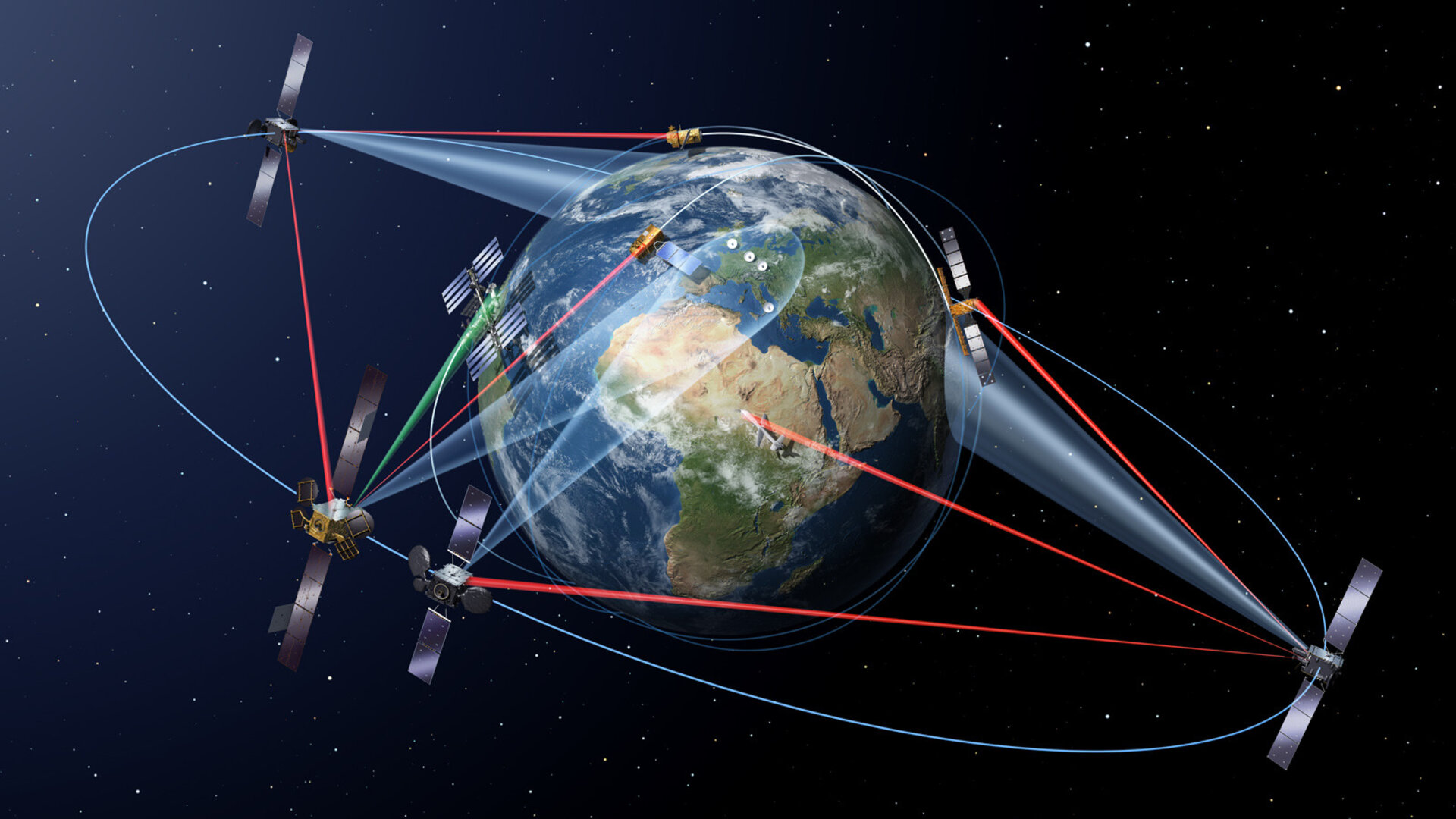'Space internet' to enhance Earth observation
Every day satellites collect a wealth of information about Earth, but they must send it down to the ground before we can make use of it. Sometimes this data can be lost, damaged, or delayed, but our access to it could be improved using Delay Tolerant Networks (DTNs) – a new way of communicating with spacecraft.
Imagine the inconvenience of only being able to send a message to a friend when your phones are directly facing each other with a perfect connection. Fortunately, the internet allows us to circumnavigate this problem by passing data to in-between nodes, and if your friend's phone isn't connected to the internet, the data is stored until it can be transferred to them.
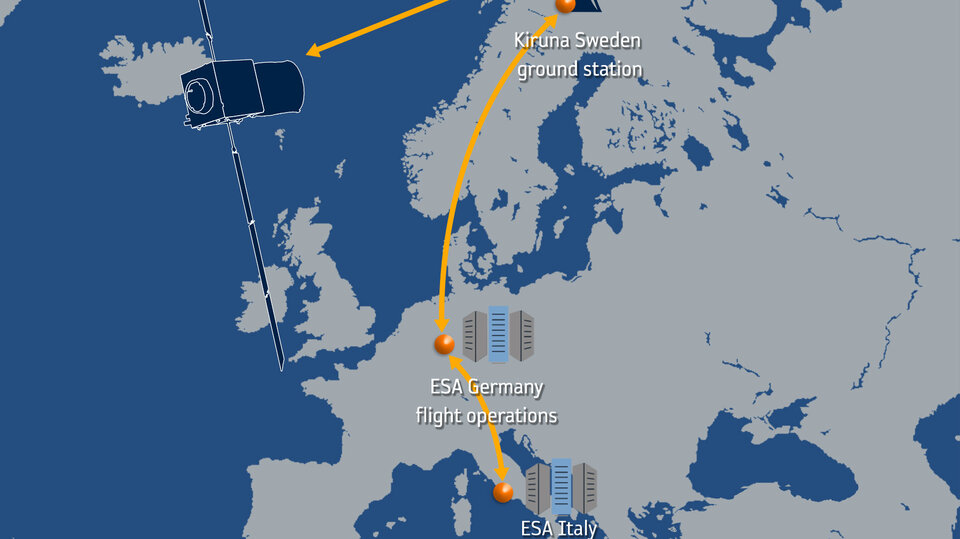
Currently communication with Earth observation satellites does not benefit from this internet-like transmission and storage of information through in-between nodes. Earth observation satellites only send data down to Earth when they are directly overhead a ground station. When a satellite isn't facing a ground station, data starts queuing up. There is no system that automatically sort the queue to prioritise the sending of urgent data – information captured about natural disasters, perhaps – from the ordinary.
Delay Tolerant Networks offer a solution in the form of using relay spacecraft and other ground stations. These would act as intermediate nodes that would be able to hold on to data and pass it on as soon as the next 'hop' is available, ensuring its safe delivery by relaying it up to a spacecraft or down to a ground station at just the right time. DTNs provide a new way of transmitting information, creating the foundation for a 'space internet'.
So far, DTNs have mostly been explored in the context of deep space – when distant planetary orbiters and rovers need to use intermediary nodes to communicate with Earth. But a team of researchers supported by ESA's Discovery and Preparation Programme recently investigated the possible benefits of Delay Tolerant Networking for Earth observation.
The team, made up of representatives from GMV INSYEN, German Aerospace Center (DLR), Solenix Deutschland and the University of Bologna analysed how DTNs could improve our communication with Earth observation spacecraft.
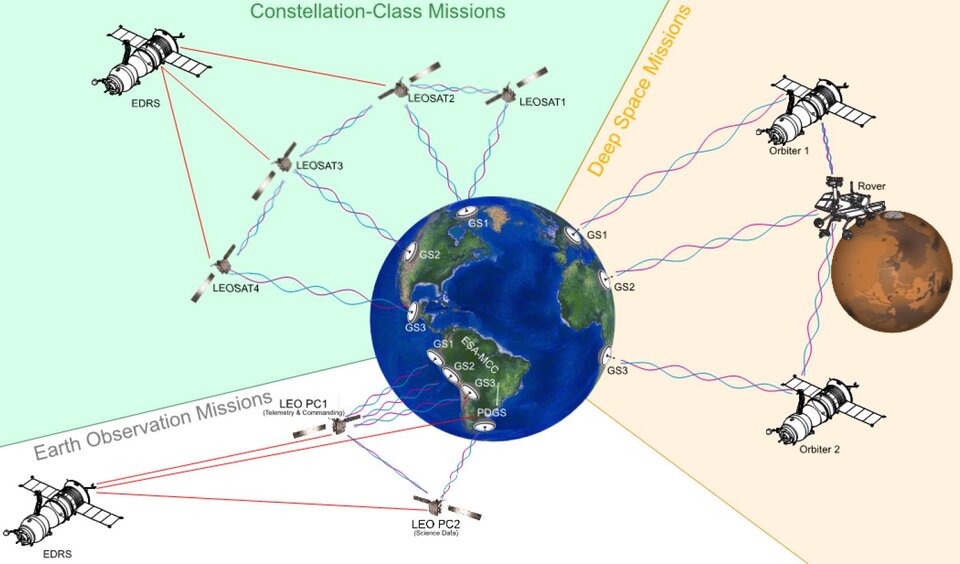
Sebastian Martin, responsible for the project from ESA's side, explains further, "DTNs allow information to be sent through a network that does not have a direct route from the starting point to the final receiver of information. In-between 'nodes' receive information and store it until they can send it on to a neighbour. In addition, DTNs can automatically schedule when to store information and when to forward it over different possible routes."
The team began by investigating how one of the existing Copernicus Sentinel missions could benefit from DTN technology. They then modelled a futuristic scenario with a full system of DTN-enabled Earth observation satellites, ground stations and control centres. In both scenarios, they found that the data automatically reached their destination via optimal routes and that the network correctly handled data with different priorities.
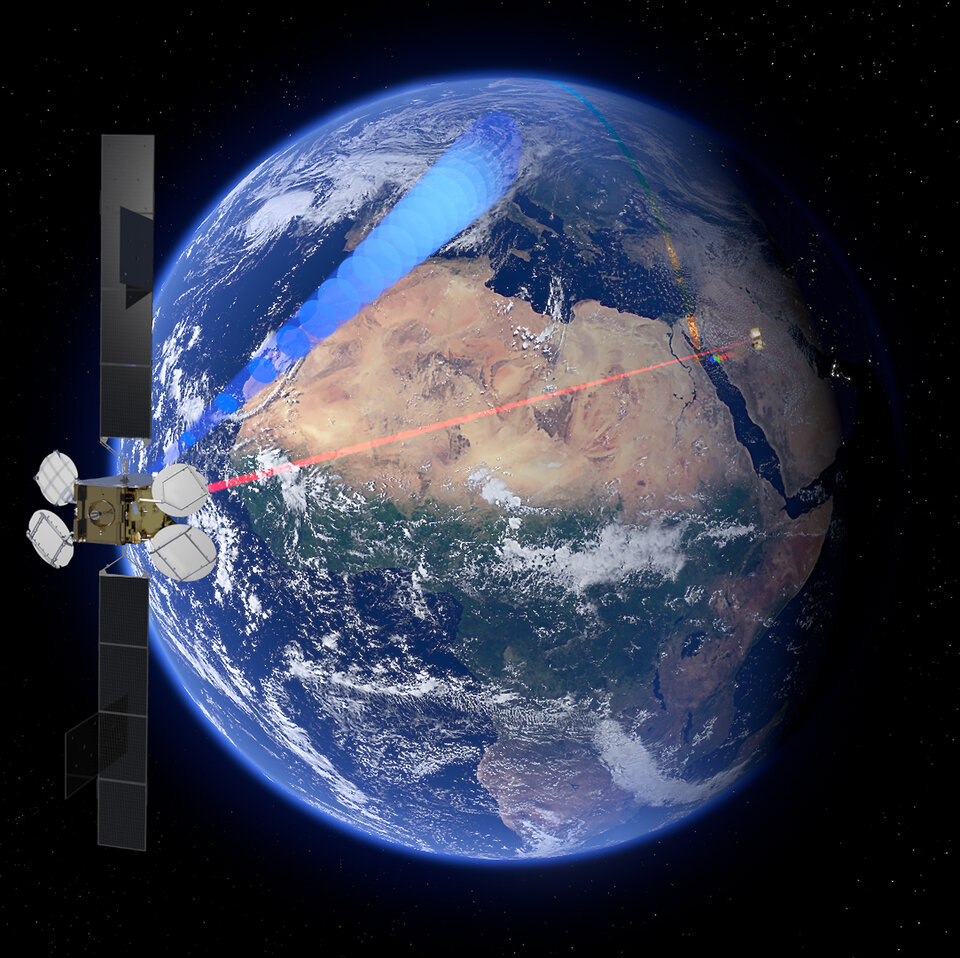
They also looked into a second benefit of DTNs. When existing Earth observation satellites pass over ground stations on their orbits around Earth, a short amount of time at the beginning and the end of its pass is not used to transfer information. This is because there is a risk of data getting lost when the satellite is low over the horizon with a poor connection with the ground station. Using DTNs, it is possible to automatically check for lost data and get it resent. This means it is safer for satellites to attempt to send information as soon as the ground station is in sight, possibly resulting in more data being transferred during each pass of the satellite.
Data can also be lost for other reasons, like bad weather. Optical communications, for example, can be severely affected by cloud cover, so to avoid loss of data it is necessary to wait for clear skies to send information. DTN networks would support this data being sent at any time, as lost data would be automatically detected and resent.
A third advantage of DTNs is that data can be automatically prioritised. Michael Staub, who managed the project from GMV INSYEN, explains, "The DTNs that we created successfully sorted data depending on its priority, meaning that important observations – for example those made during natural disasters – would be sent as quickly as possible, even if other data joined the queue first."
This study is one step further in our understanding of how DTNs could revolutionise space communications. Next, experts will investigate how DTNs can be implemented technically, what data types would profit most, the potential impact on operations and operators, and where new markets and users could benefit from this technology.
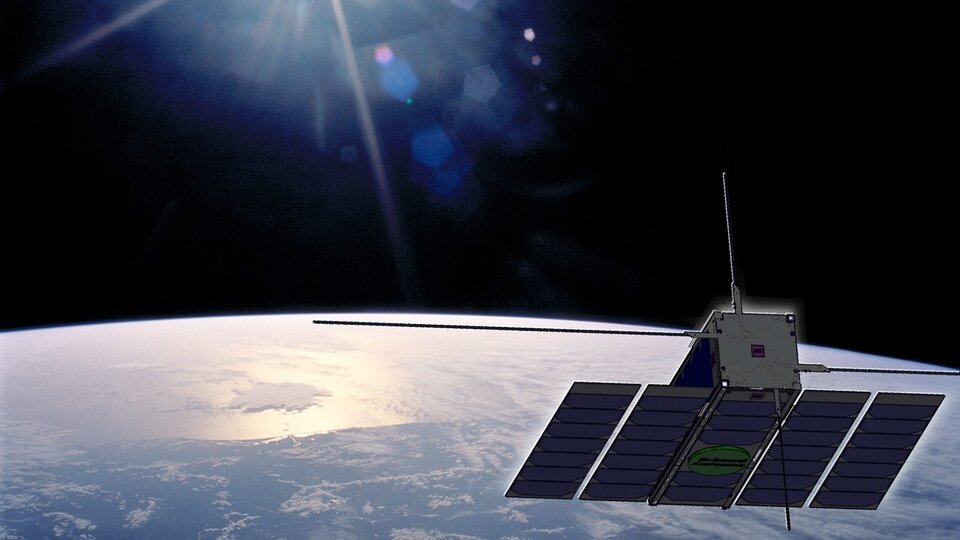
One option being considered for testing DTNs is ESA's OPS-SAT CubeSat. The 30-centimetre high demonstrator will test out a large variety of technologies, including DTNs, to provide information useful for larger future missions. Eventually, the more spacecraft and ground stations using DTN technology, the more benefits the technology will bring.
"Through this study, we have shown that DTNs would be very beneficial for Earth observation scenarios," concludes Staub. "The networks we propose will enable organisations and commercial entities to interoperate, including encouraging the sharing of each other's facilities and resources."
With space exploration becoming more complex, current communication networks become increasingly inadequate. DTNs would facilitate the next generation of space missions.
For more information about this study, documentation can be found here.















 Germany
Germany
 Austria
Austria
 Belgium
Belgium
 Denmark
Denmark
 Spain
Spain
 Estonia
Estonia
 Finland
Finland
 France
France
 Greece
Greece
 Hungary
Hungary
 Ireland
Ireland
 Italy
Italy
 Luxembourg
Luxembourg
 Norway
Norway
 The Netherlands
The Netherlands
 Poland
Poland
 Portugal
Portugal
 Czechia
Czechia
 Romania
Romania
 United Kingdom
United Kingdom
 Slovenia
Slovenia
 Sweden
Sweden
 Switzerland
Switzerland


























